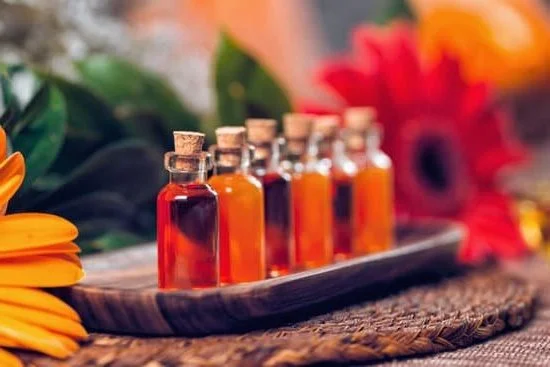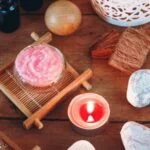Are you looking to create a peaceful and relaxing space right in your own backyard? If so, then learning how to make an aromatherapy garden is the perfect project for you. Aromatherapy, the practice of using natural oils to enhance mental and physical well-being, has been around for centuries and has numerous benefits. In this article, we will explore the art of aromatherapy and provide valuable tips on how to create your very own aromatic garden at home.
When it comes to selecting the right plants for your aromatherapy garden, there are several options to consider. Plants such as lavender, rosemary, eucalyptus, and more are known for their soothing and aromatic properties. We will discuss how these plants can contribute to a relaxing ambiance in your garden as well as their specific benefits in aromatherapy practices.
In addition to plant selection, designing your aromatherapy garden plays a crucial role in creating a tranquil and inviting space. From layout and furniture choices to color schemes and lighting, we’ll delve into tips for designing an outdoor oasis that promotes relaxation and stress relief.
Additionally, we will explore the process of extracting essential oils from these plants and using them effectively in your aromatherapy garden. Join us as we take you through this journey of embracing the healing power of aromatherapy right in your own backyard.
Selecting the Right Plants for Your Aromatherapy Garden
When creating an aromatherapy garden, it is essential to select the right plants that will not only thrive in your specific climate but will also provide the aromatic qualities you are seeking. Some popular choices for an aromatherapy garden include lavender, rosemary, eucalyptus, peppermint, chamomile, and jasmine. These plants are known for their soothing and therapeutic scents that can promote relaxation and stress relief.
Lavender is one of the most popular choices for an aromatherapy garden due to its calming and relaxing properties. It is relatively easy to grow and thrives in many different climates. Rosemary is another excellent option known for its invigorating scent that can help improve focus and mental clarity. Eucalyptus is famous for its refreshing aroma that can help open up the airways and promote easier breathing.
When selecting plants for your aromatherapy garden, consider the specific benefits you want to derive from them and how they will complement each other when used together. This will allow you to create a harmonious blend of scents in your garden that suits your personal preferences and needs.
Creating a successful aromatherapy garden involves careful selection of plants with scents that work well together, as well as regular maintenance to ensure their health and vitality. With these tips in mind, anyone can create a beautiful oasis at home specifically tailored to promoting relaxation, wellness, and inner peace.
| Aromatherapy Plant | Main Benefit |
|---|---|
| Lavender | Calming and relaxing properties |
| Rosemary | Invigorating scent; improves focus |
| Eucalyptus | Refreshing aroma; helps with breathing |
| Peppermint | Cooling effect; aids in digestion |
Designing Your Aromatherapy Garden
Creating an aromatherapy garden is not just about selecting the right plants; it’s also about designing a space that promotes relaxation and invites you to connect with nature. Here are some tips on how to design your aromatherapy garden to create a soothing and inviting atmosphere:
1. Pathways and seating areas: Consider adding meandering pathways or stone walkways throughout your garden to encourage exploration and discovery. Integrate cozy seating areas where you can sit and unwind while enjoying the aroma of your plants.
2. Water features: The sound of running water can be incredibly calming, so consider incorporating a small fountain, pond, or birdbath into your garden design. Not only will it add visual interest, but it will also contribute to the overall tranquil ambiance of your space.
3. Lighting: Strategically placed lighting can transform your garden into an enchanting oasis, allowing you to enjoy its beauty even after the sun goes down. Use soft, warm-toned lights to create a magical atmosphere and highlight the beauty of your plants.
In addition to these design elements, don’t forget to take into consideration the overall layout and organization of your aromatherapy garden. By carefully planning the placement of each plant and feature, you can create a harmonious and relaxing environment that will enhance your aromatherapy experience.
Remember that creating an inviting space is just as important as selecting the right plants for your aromatherapy garden. With thoughtful design choices, you can cultivate a serene retreat that promotes wellness and relaxation.
Whether in a large backyard or small urban balcony, incorporating these elements into your aromatherapy garden will surely make it feel like a peaceful sanctuary for both body and mind.
Essential Oils
When creating an aromatherapy garden, the use of essential oils is a key component in reaping the benefits of aromatherapy. Essential oils are highly concentrated plant extracts that capture the natural aroma and flavor of the plant. They are commonly used for their therapeutic properties and can be extracted from a variety of plants such as lavender, rosemary, eucalyptus, and many more. Here are some ways on how to make an aromatherapy garden by extracting and using essential oils:
1. Steam Distillation: This process involves steaming plant material to release their volatile compounds, which are then condensed into essential oils. This method is commonly used for plants like lavender and eucalyptus.
2. Cold-Press Extraction: This method is typically used for citrus fruits such as lemon or orange. The rinds of the fruits are pressed to release their essential oils.
3. Solvent Extraction: Organic solvents such as hexane or ethanol can be used to extract essential oils from delicate flowers or plants that do not respond well to steam distillation.
Incorporating these methods into your aromatherapy garden will allow you to create a wide range of essential oils that can be used for various purposes such as massage, diffusing, or creating DIY aromatherapy products. By extracting and using essential oils from your own garden, you can ensure that they are pure and free from synthetic additives, further enhancing your aromatherapy experience.
Maintaining Your Aromatherapy Garden
Regular Care and Maintenance
Once you have established your aromatherapy garden, it is important to provide regular care and maintenance to keep your plants healthy and thriving. This includes watering your plants consistently, pruning them when necessary, and keeping an eye out for any signs of pests or disease. Be sure to research the specific needs of each plant in your garden so that you can provide them with the proper care they require.
Organic Pest Control
A key aspect of maintaining a healthy aromatherapy garden is controlling pests in an organic and natural way. Avoid using chemical pesticides that can harm both your plants and the environment. Instead, consider using natural pest control methods such as introducing beneficial insects, using homemade insecticidal soaps, or planting companion plants that repel pests. By taking a proactive approach to pest control, you can maintain a thriving garden without the use of harmful chemicals.
Seasonal Considerations
Different seasons present different challenges for maintaining an aromatherapy garden. It’s important to understand how to care for your plants during changing weather conditions. For example, during hot summer months, be sure to provide adequate water and protection from intense sunlight.
In colder winter months, consider bringing sensitive plants indoors or providing them with extra mulch for insulation. By preparing for seasonal changes and understanding the specific needs of each plant in your garden, you can ensure their continued health and vitality throughout the year.
DIY Aromatherapy Projects
Creating your very own DIY aromatherapy projects using herbs from your garden can be a rewarding and fulfilling experience. Not only does it allow you to customize scents based on your preferences, but it also gives you the opportunity to fully immerse yourself in the world of aromatherapy. From candles and oils to potpourri, there are many ways to incorporate the soothing and healing benefits of aromatic plants into your daily life.
One popular DIY project that you can make using herbs from your aromatherapy garden is homemade candles. By infusing natural essential oils extracted from plants like lavender, rosemary, or eucalyptus into melted soy wax or beeswax, you can create beautifully scented candles that promote relaxation and stress relief. These homemade candles not only provide a warm and inviting atmosphere in your home but also offer the therapeutic benefits of aromatherapy.
Another way to use herbs from your garden is by creating your own essential oils. You can extract essential oils from aromatic plants using methods such as steam distillation or cold pressing. Once you have collected the essential oils, you can use them in a diffuser to fill your space with calming scents or dilute them with carrier oils for topical application. Incorporating these custom-made essential oils into your daily routine can enhance well-being and promote emotional balance.
Additionally, you can utilize herbs from your aromatherapy garden to make potpourri blends. Drying fragrant herbs like lavender, mint, or chamomile and combining them with dried flowers or citrus peels can result in delightful potpourri mixtures that release pleasant aromas throughout your home.
These homemade potpourri blends not only add an appealing fragrance to any room but also serve as natural air fresheners with mood-enhancing properties. The possibilities for DIY aromatherapy projects using herbs from your garden are endless; allowing you to fully enjoy the therapeutic benefits of aromatic plants in various forms.
Incorporating Aromatherapy Garden Into Your Daily Routine
Benefits of Aromatherapy in Meditation and Yoga
Aromatherapy has been used for centuries as a way to enhance meditation and yoga practices. The soothing scents of essential oils can help create a calming atmosphere, promote relaxation, and increase focus during these activities. Whether you practice meditation or yoga indoors or outdoors, incorporating the use of aromatherapy can elevate the experience and provide additional benefits for both body and mind.
Creating an Aromatherapy Space for Meditation and Yoga
When incorporating an aromatherapy garden into your daily routine of meditation and yoga, it’s important to establish a designated space that is conducive to relaxation. Consider adding aromatic plants such as lavender, chamomile, or jasmine to this area to heighten the sensory experience. You may also want to include features such as wind chimes, comfortable seating, and soft lighting to further enhance the ambiance of your aromatherapy garden.
Stress Relief With Aromatherapy
In addition to meditation and yoga, aromatherapy can also be used as a tool for stress relief in your daily routine. The use of essential oils such as lavender, rosemary, or peppermint can help alleviate feelings of anxiety and tension.
Whether diffused in the air, added to bathwater, or used in massage oils, these scents have been shown to have a calming effect on the mind and body. By incorporating these essential oils into your daily self-care regimen, you can create a sense of calmness and balance in your life.
By understanding how to make an aromatherapy garden part of your daily routine for meditation, yoga, and stress relief, you can enjoy the many benefits that come with it. From creating tranquil spaces for mindfulness practices to using soothing scents for relaxation purposes, an aromatherapy garden can play a significant role in promoting overall well-being.
Bonus
Creating an aromatherapy garden is a fulfilling and rewarding project, but it can be daunting for those who live in small spaces or urban areas. However, with some creativity and careful planning, it is entirely possible to cultivate an aromatherapy garden even in limited spaces. Here are some ideas for making the most out of your small area:
One option for small spaces is vertical gardening. Utilizing vertical space allows you to grow a variety of aromatic plants without taking up much ground space. Consider using hanging planters, wall-mounted pots, or trellises to grow herbs like lavender, rosemary, and mint.
Another idea is to incorporate aromatherapy plants into existing landscapes. Even if you only have a balcony or a small patio, you can still include aromatic plants in your outdoor space. Planting herbs in containers alongside other flowers and greenery can add both visual appeal and fragrance to your surroundings.
For those without any outdoor space at all, indoor gardening is the answer. Many aromatic plants thrive indoors when given the right conditions. Creating a small indoor herb garden on a windowsill or countertop can provide you with fresh herbs for culinary use as well as for aromatherapy purposes.
Table
| Ideas for Small Spaces | Description |
|---|---|
| Vertical Gardening | Utilize vertical space with hanging planters or wall-mounted pots. |
| Incorporate into Existing Landscapes | Include aromatic plants in balconies or small patios alongside other flowers and greenery. |
| Indoor Gardening | Create an indoor herb garden on windowsills or countertops for easy access. |
Conclusion
In conclusion, creating an aromatherapy garden can be a rewarding and therapeutic experience. By incorporating the tips and ideas provided in this article, you can embrace the healing power of aromatherapy in your own garden. From selecting the right plants to designing a relaxing space, extracting essential oils, maintaining your garden, and incorporating it into your daily routine, you have learned how to make an aromatherapy garden that suits your needs and preferences.
As you embark on this journey, remember that the benefits of aromatherapy go beyond just the pleasant scents. The use of essential oils from your garden can help reduce stress, improve mood, alleviate anxiety, and promote better sleep. Additionally, with DIY projects such as making candles, oils, and potpourri using herbs from your garden, you can further enhance the therapeutic environment of your outdoor space.
Whether you have a small space or live in an urban area, there are options available for creating an aromatherapy garden that fits your lifestyle. By taking the time to cultivate and nurture your plants, you will not only enjoy the beauty of your garden but also experience the incredible aromatic benefits it has to offer.
So roll up your sleeves and get ready to create a serene sanctuary that stimulates all of your senses – because now you know how to make an aromatherapy garden.
Frequently Asked Questions
How Do You Grow a Scented Garden?
Growing a scented garden involves selecting fragrant plants such as lavender, jasmine, rosemary, and other aromatic herbs and flowers. These plants require proper sunlight, soil, and water to thrive and emit their delightful scents.
What Plants Are Used in Aromatherapy?
Aromatherapy utilizes a variety of plants for their therapeutic scents. Some commonly used plants include lavender for calming effects, eucalyptus for respiratory support, peppermint for headaches, tea tree for its antibacterial properties, and chamomile for relaxation.
What Plants Can Be Used for Essential Oils?
Many different plants can be used to create essential oils. Examples include lavender, rosemary, peppermint, eucalyptus, lemon, and tea tree. These plants are often distilled to extract the oils which can then be used for various purposes such as massage therapy or diffusing in the air for aromatherapy benefits.

Are you looking for a natural way to improve your health and wellbeing?
If so, aromatherapy may be the answer for you.





